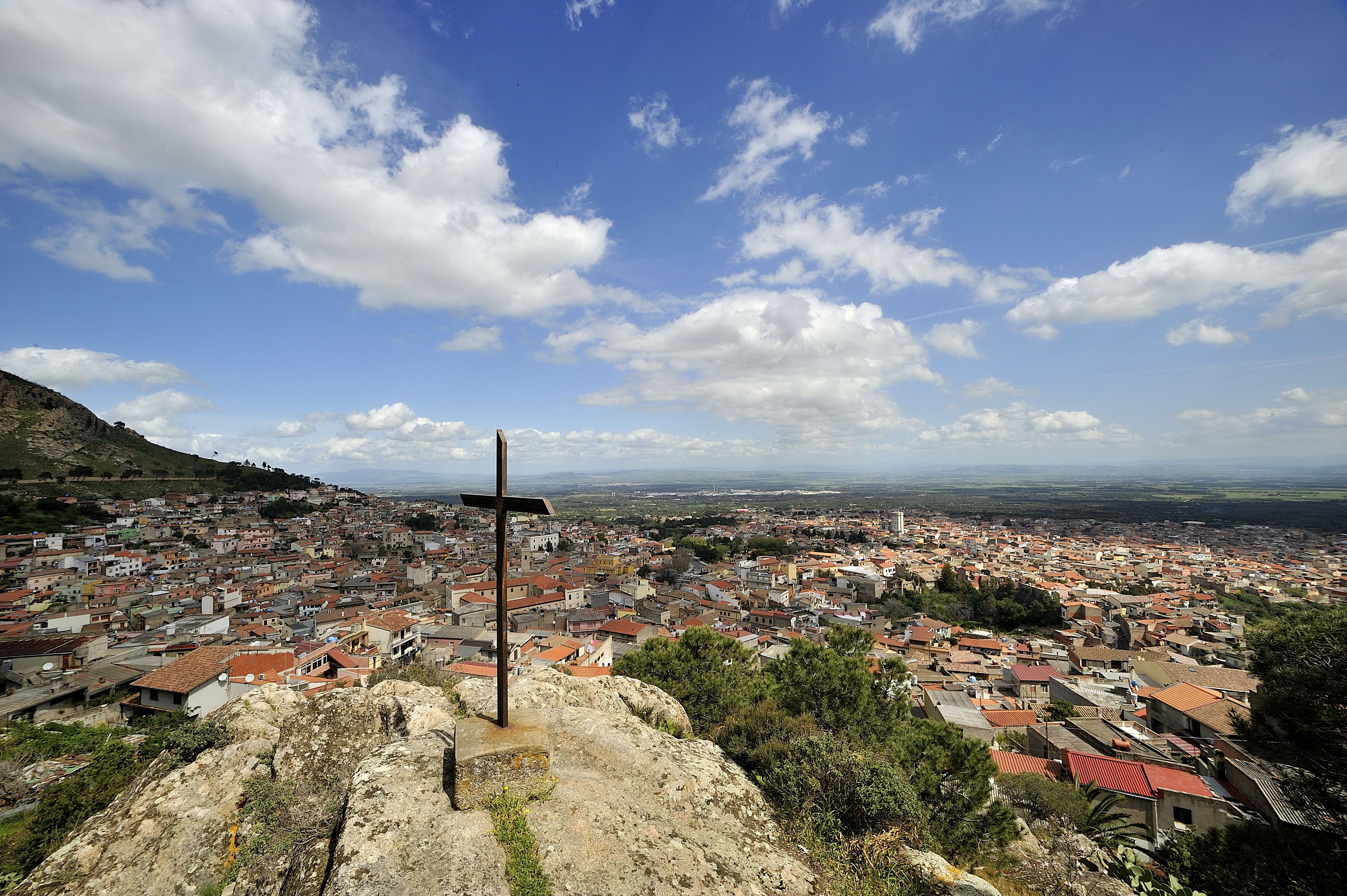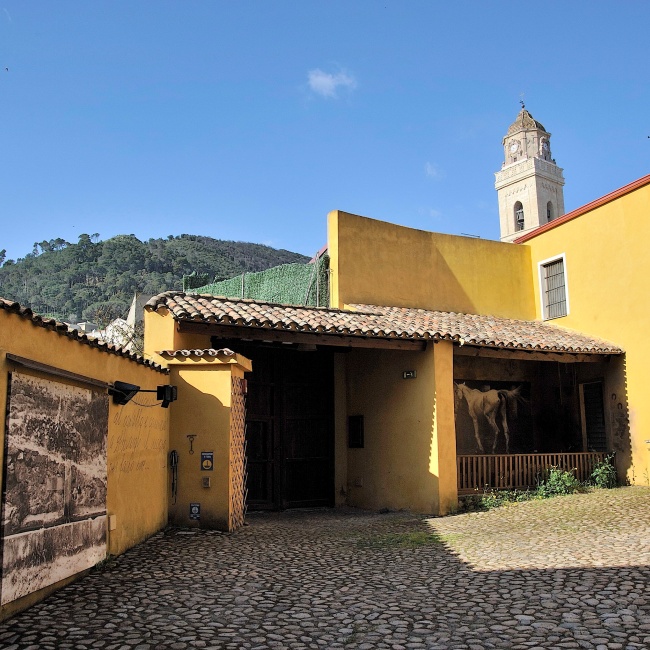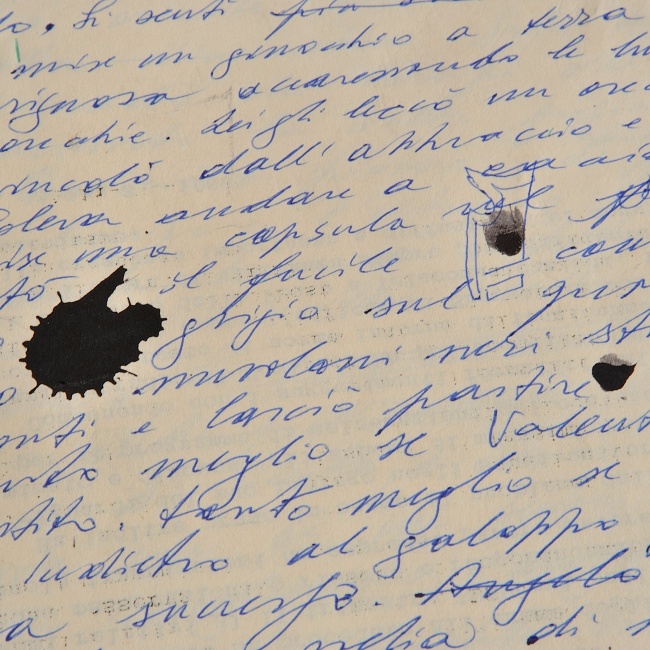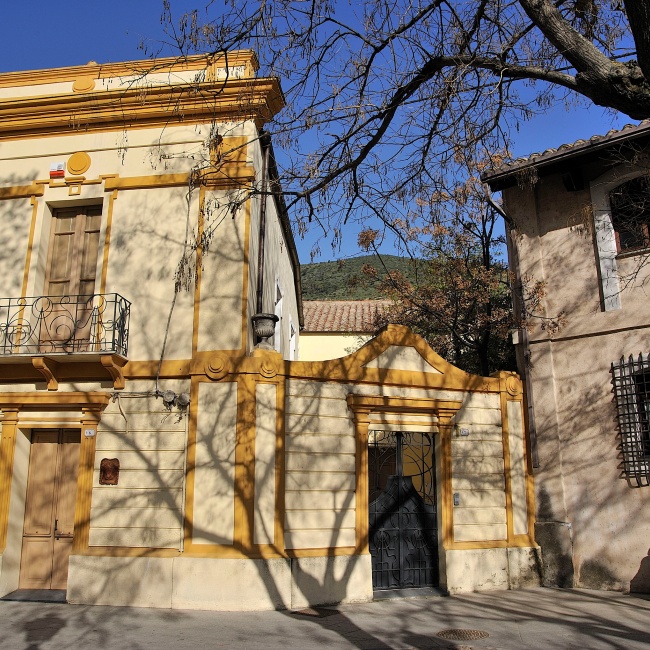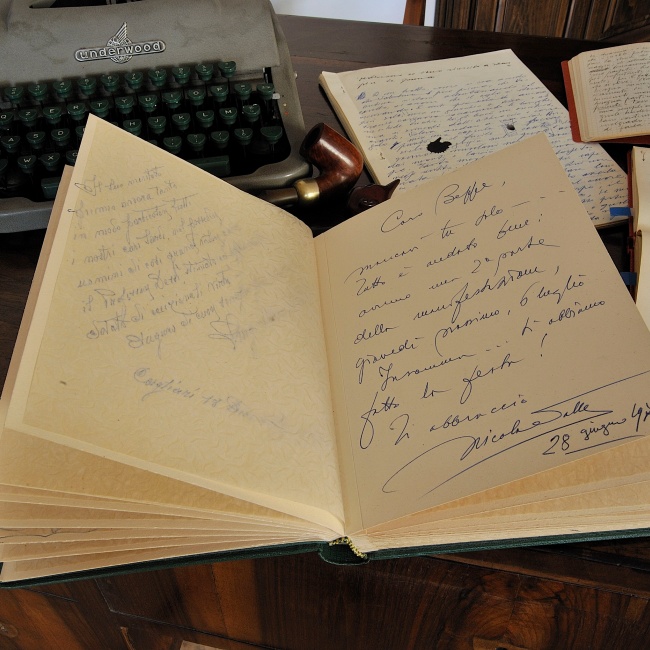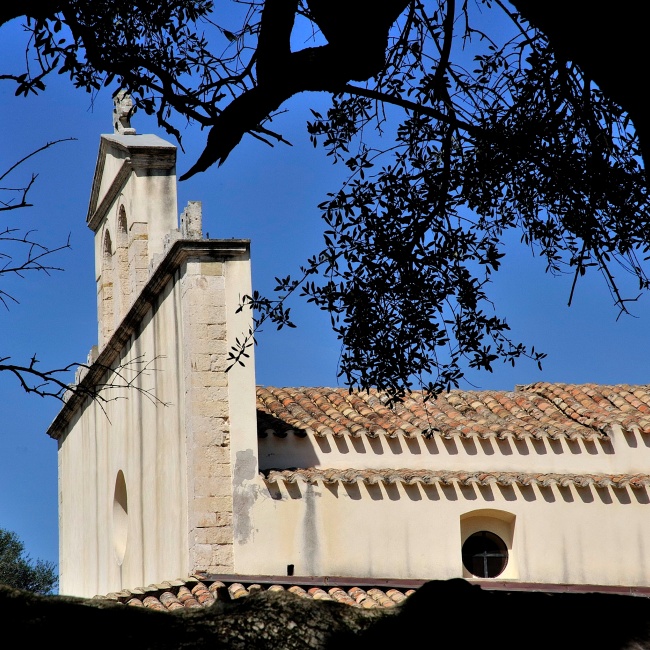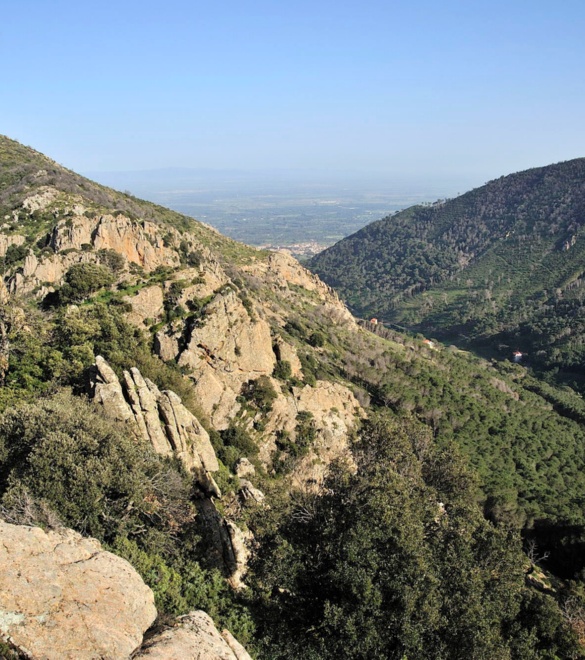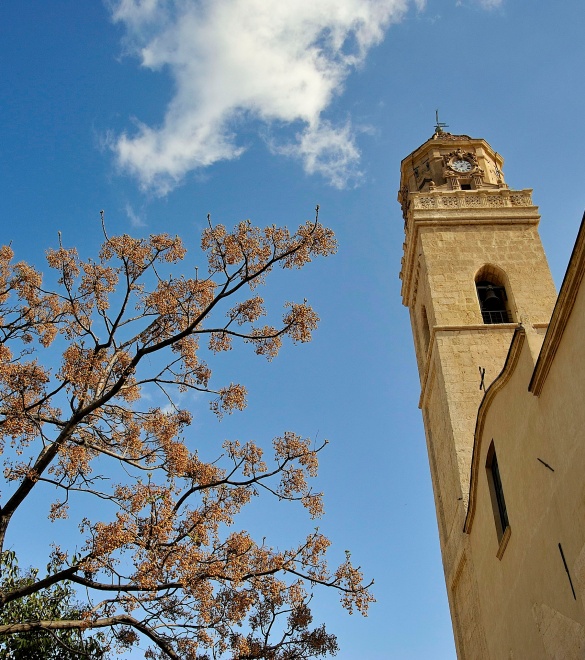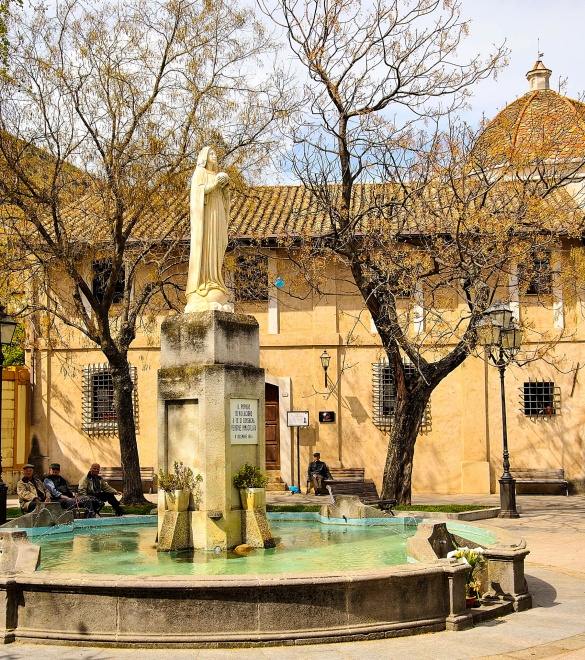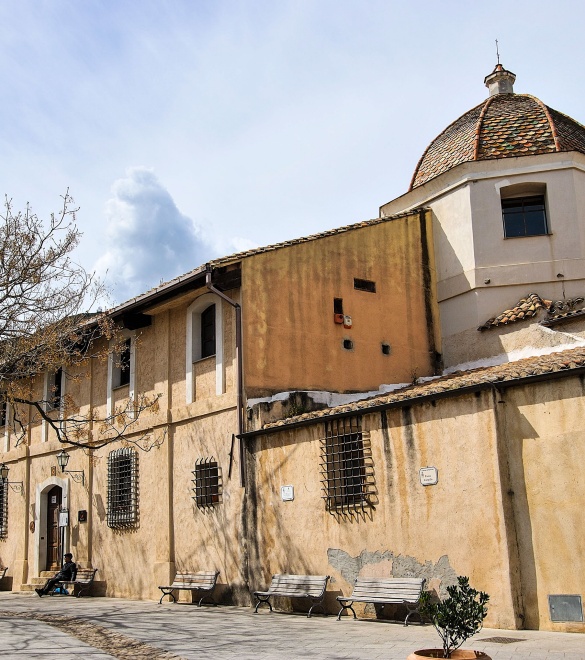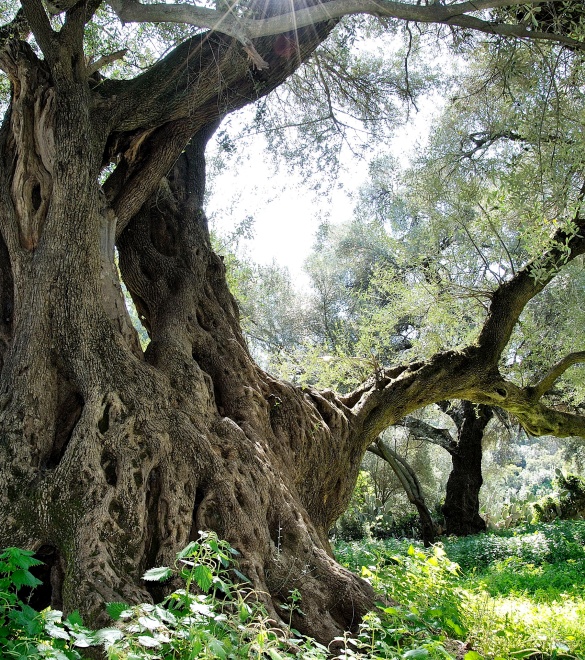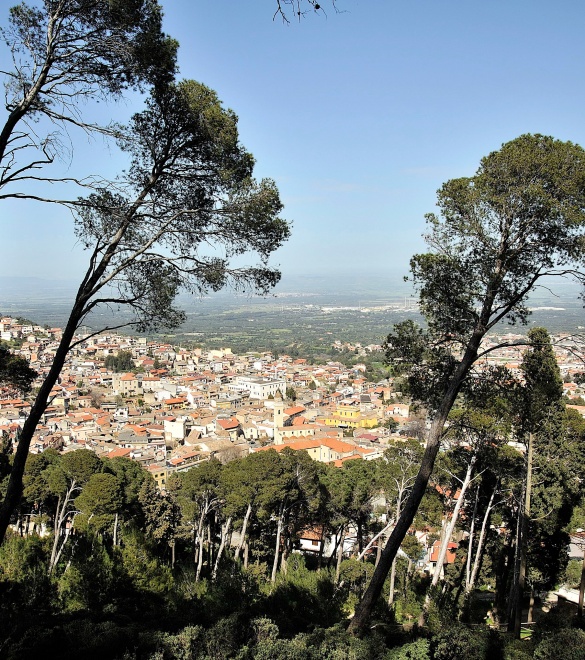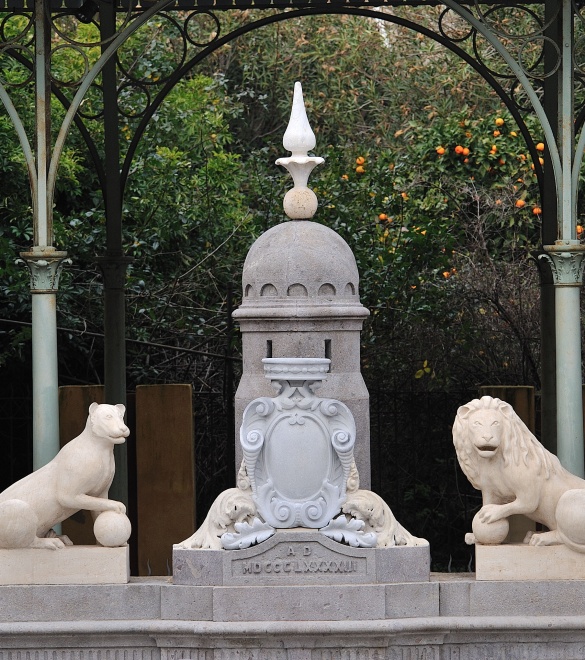Itinerary detail
Places out of “Paese d’Ombre” – Town of Shadows
It is not difficult to be directed by the pages written and to discover how the piazzas, streets and churches in the town to this day tell of ancient impressions, evoking the emotions found in the author’s work.
“Se tocco l’acqua della Spendula, so di cosa è fatta quell’acqua, se prendo in mano un sasso, ho del sasso una conoscenza che arriva fino alla molecola, all’atomo”
("If I touch the waters of La Spendula, I am aware of that which this water is made. If I hold a stone in my hand, I have an understanding of it that reaches down into its very molecule, its atom")
This is how Giuseppe Dessì describes the profound sense of belonging that he shared with Villacidro and its vicinity. In fact, it is the author who offers Villacidro its most important guidebook: the novel Paese d’Ombre (Town of Shadows). It is not difficult to be directed by the pages written and to discover how the piazzas, streets and churches in the town to this day tell of ancient impressions, evoking the emotions found in the author’s work.
In the heart of the old town centre stands the Lavatoio, (Washhouse), the symbol of Villacidro:
“Una grande tettoia di stile liberty sorretta da sei colonne di ghisa adorne di ghirigori e di pigne, una decina di vasche con rubinetti e tubi di scarico e il serbatoio simile a quello degli abbeveratoi”
("A large canopy built in Art Nouveau style held up by six cast iron columns decorated with doodles and pine cones, a dozen or so tubs with faucets, waste pipes and water tanks that look like those of a drinking trough")
Not far from the Washhouse stands Piazza Zampillo which:
“era semplicemente la piazza dei giochi e apparteneva a tutti i ragazzi del paese”
("it was simply the piazza to play in and it belonged to every child in town")
Buildings of historical relevance overlook the square such as the Montegranatico, an institution of a Sardinia under the Savoy dynasty where wheat, the single most essential source of survival, was kept and protected in case of floods:
“Presto fu in piazza Cadoni, dove l’acqua stava per raggiungere il piano rialzato dei magazzini del Montegranatico, nei quali era ammassato tutto il grano. Se l’acqua fosse entrata nei magazzini, il danno sarebbe stato enorme.”
("Soon, the water reached piazza Cadoni and was rising to the intermediate storey of the Montegranatico warehouse in which the wheat was collected. Had the water flooded into the warehouse, the damage would have been enormous")
Casa Cadoni, and Ponte Ferraris both overlook the piazza, the Santa Barbara Parish and its medieval-style square are only a few metres away.
Ponte Ferraris, was the bridge built in order to enable town dwellers to cross over the Rio Fluminera river that still flows through the town, even though it is now covered.
Leaving piazza Zampillo, continuing along the suggestive via Tuveri, which still hosts ancient cobblestones, the Castangias district appears, located at the foot of Monte Cuccureddu.
“la parte più antica del paese: piccole case di pietra e piccoli cortili irti di mucchi di rami secchi, di fasci di canne, di lunghe pertiche. Ogni casa, simile a un guscio annerito, prende luce da piccole finestre e dalla porta aperta direttamente sul cortile.”
("the oldest part of the town: small, stone houses and small courtyards bristling with bunches of dried branches, bundles of reeds and long poles. Every home, like a blackened shell, gets its light from small windows and doors opening directly onto the courtyards")
Monte Cuccureddu and Monte Omo host the century-old pineta del Carmine pine grove that overlooks the residential centre described in a heartfelt, detailed manner:
“A nessuno sarebbe venuto in mente di mettere quei lampioni per le strade, uno ogni duecento passi…,ma una volta messi tutti approvavano. Così era stato per il Lavatoio, così fu per il mattatoio e così, infine, fu per la pineta, al punto che i bambini della scuola si assunsero l’impegno, dopo che i primi pini furono piantati attorno alla chiesetta del Carmelo di innaffiarli ogni giorno”.
(It would have never crossed anybody’s mind to install those streetlamps, one every two hundred paces.. but once installed, they met with everyone’s approval. The same thing happened with the Washhouse and the slaughterhouse and for the pine grove as well to such a point that the schoolchildren took it upon themselves to water the first pine trees planted around the Carmelo every single day)
Paese d’Ombre also guides us through the traditional activities of Norbio: the wide expanses of Balanotti olive trees and ancient olive-presses that recall the culture of olive growing; the fields of wheat that recall the culture of cultivating grains; the woods that evoke the tradition of woodcutting and coal; the fruit trees, the goatherds and much more. The emotion and literary impression is even more intense if one goes to the Parco di San Sisinnio park where enormous olive trees that are thousands of years old, among Europe’s largest, stand in all their majesty. These are the large, silent “guardians of time” and still tell of pages that have been written and of those to come.
Route type:
walking and by car for the parks
Travel time:
full day
Geographic map
To be seen
Castangias Park
The area in the outskirts of the town now known as Parco Castangias (Castangias Park) was once a beautiful forest filled with cherry trees, European nettle trees, walnut trees and first and foremost chestnut trees, from which the place gets its name.
Church of Santa Barbara
The Church of Santa Barbara, along with the Church of the Anime Purganti (Purged Souls) and the Oratorio di Nostra Signora del Rosario (Oratory of Our Lady of the Rosary) form a triad of churches that overlook the main piazza of the townand it is Villacidro’s oldest church (13th century).
Jet Square
Piazza Zampillo has always been the heart of the town.
Montegranatico and Archaeological Museum
The ancient “monte del grano”, has hosted the “Villa Leni Civic Archaeological Museum” since 2003. This expositional area displays many original finds arriving from the area’s most important archaeological sites.
Park of San Sisinnio
This Park of age-old Olive Trees is a natural spectacle of majestic beauty, one of the jewels in the crown of Villacidro’s natural heritage.
Pine Grove
A lovely, dense pine grove surrounds the upper portion of Villacidro, entirely covering the slopes of Monte Omo and Monte Cuccureddu upon which the town is positioned.
The Wash house
The Washhouse was built in 1893 in the ancient district known as “Frontera de sa Mitza”, on a design by engineer Enrico Pani. It was part of a much broader project that included the entire surrounding piazza.
